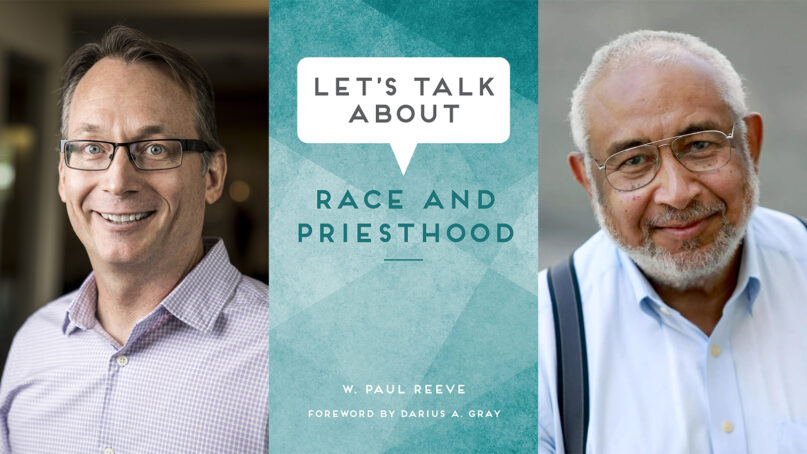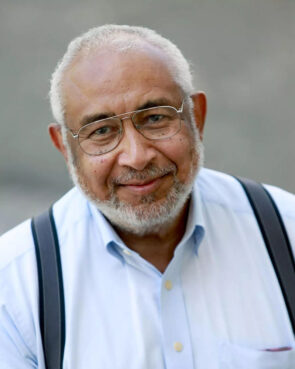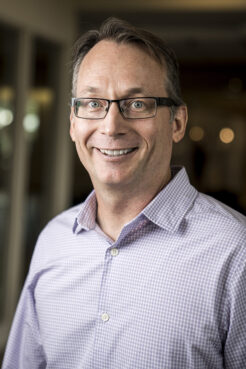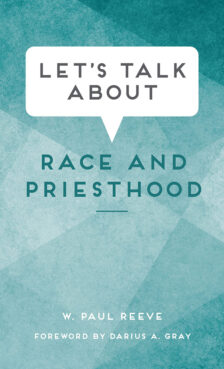Mormons know how the Church sanctioned racial exclusion. That policy has a paper trail.
Paul Reeve's new book argues the decision to ban Blacks from priesthood and the temple began with Brigham Young but wasn't fully entrenched until the early 1900s under Joseph F. Smith.

(RNS) — Fifty years ago this spring, Lester Bush published a groundbreaking article in “Dialogue” that carefully reviewed how the Church of Jesus Christ of Latter-day Saints first came to ban Black people from holding the priesthood and entering the temple. In short, he found no evidence the policy was instituted by founding prophet Joseph Smith.
The 1973 article was influential for a generation of Latter-day Saints who believed the policy was unjust. It also shifted the thinking of Spencer W. Kimball, the prophet who would reverse it five years later.
One person directly affected by it was Darius Gray, an African American man who converted to the LDS Church in 1964. He learned about the racist ban the night before his scheduled baptism but felt prompted to join the church anyway. Now Gray provides the foreword for “Let’s Talk About Race and Priesthood,” historian Paul Reeve’s engaging and highly readable new book that traces the ban from its beginnings under Brigham Young through its 1978 reversal to today, when some people still try to justify it as having been God’s will.
I got to chat with both men about the book and the important story it is telling. This interview has been edited for length and clarity. – JKR
Darius, in your foreword, you describe a painful experience that happened at church in the late 1960s, when you and your wife were attending a sacrament meeting.

Darius Gray. Courtesy photo
Darius Gray: I was in a married student ward at the University of Utah, and my wife and I were doing the normal thing, going to sacrament meeting on a Sunday, and seated in the center section toward the left. I was on the aisle, and as the sacrament tray came by, I partook of the sacrament, and then I reached for the handle of the tray to be able to pass it to my wife. And the elder who had given me the sacrament quickly withdrew the tray and gave me a look. Then he reached around me and handed the tray to my wife, who is melanin deprived. It was clear that my cursed hands were not to touch that tray, the Lord’s supper. I remember that all too well.
You’ve been holding two things in tension for a very long time: trying to explain to people why you are a member of this church, but also understanding why they might see those things as incompatible because you were African American.
Darius Gray: Yeah, it can be difficult. It’s not just what the distant history was; it’s what the current realities are, and when you combine the two, it can get to be too much. It’s a troubling history in many ways.
Yes it is. Paul, can you describe the origin for this book?
Paul Reeve: Deseret Book approached me in 2018 and explained the “Let’s Talk About” series as modeled after Oxford’s “Very Short Introduction” series. They wanted to address sometimes controversial topics with scholarly expertise, but also pitched at a general Latter-day Saint audience. I liked the idea of this series and was pleased that Deseret Book was launching it, but I was also skeptical, and I expressed that skepticism.
What in particular made you skeptical?

Paul Reeve. Photo courtesy of the University of Utah
Paul Reeve: The church’s racial history is difficult history, and I know what the evidence is. In fact, I shared with Deseret Book the Pitman shorthand transcription of Brigham Young’s 5th of February, 1852, speech and said, “I’m going to be quoting from that. You have to be aware that if I’m doing this book, I will engage the evidence. You can’t come to me after the manuscript is produced and say, ‘you can’t say that.’” So my skepticism was just: Will a church-owned entity be willing to say these difficult things?
And I have to give Deseret Book credit: My editor, Lisa Roper, never backed down and asked that I give them a chance. So we worked together and came up with a manuscript that we were all pleased with.
The book is short but so clear. Even its very structure makes the argument that racist restrictions on priesthood and temple access were not part of the earliest LDS Church.
Paul Reeve: The book is structured around the way that I have come to understand the history, which came in three phases. First, we had open priesthood and temples, then segregated priesthood and temples, and then in June of 1978 a return to the universal roots of the faith. So the book’s structure is driven by the evidence.
My sense is that perhaps the average Latter-day Saint will be unaware of that. Even in 2023, there’s still an existing narrative that the racial restrictions were in place from the beginning. That they traced back through the foggy mists of time into the eternities, that God put them in place and human beings had nothing to do with it. This view says it took until 1978, according to God’s timing, to lift the restrictions. So the very structure of the book challenges that notion. I’ve spent over a decade in the archives and this is the evidence I’ve found.
Even people who are familiar with the basic contours of that history, like Elijah Able (also spelled Abel) being ordained to the priesthood by Joseph Smith, are going to find some amazing stories here that put a human face on the three stages of the history you’re telling.
Darius Gray: For me, that was the best part. The stories personalized this period in our history and the struggle that we yet deal with. It’s not sanitized, but it is pure.
Paul Reeve: It’s rewarding for me to hear that. The timing of this book is such that the Century of Black Mormons project allowed the narrative to include the stories of Black Latter-day Saints. The way the story has been told in the past has largely been from the perspective of the white male leaders, the decisionmakers — at what point did they decide to restrict the priesthood and the temple to people of African descent? But this book tells the story through the lives of actual Black Latter-day Saints, including people that haven’t been written about before. Some of them saw the space for full participation shrink across the course of their own lifetimes.
You talk about the way the racist restrictions slowly coalesced, from Brigham Young and then especially with Joseph F. Smith (nephew of the founding prophet Joseph Smith) at the turn of the century.

“Let’s Talk About Race and Priesthood” by historian W. Paul Reeve. Courtesy image
Paul Reeve: It’s very difficult history. From 1879 and 1895, Joseph F. Smith makes two positive statements reaffirming Elijah Able’s priesthood as valid. In 1883, he sets Able apart for his third mission as a 75-year-old man. So that’s another indication that Joseph F. knows Elijah Able’s priesthood is valid, because he’s sending him on a third mission. But in 1904, Joseph F. says that Able having the priesthood was a mistake that was never corrected, and then in 1908 he claims that Able’s priesthood was declared null and void by Joseph Smith himself.
I believe that Joseph F. Smith’s false claim solidifies the racial restrictions in place. It’s the last brick in the wall of exclusion. So you create a new memory moving forward, and the new memory insists the racial restrictions have been in place from the beginning. God put them in place, and human beings can’t do anything about it. And that becomes the memory for the 20th century.
So although Brigham Young gets most of the attention in terms of the origins of the racial restrictions, and that’s true, they’re not solidified in place at his first utterance. I hope the book demonstrates the way they take on a life of their own across the course of the last half of the 19th century. Joseph F. Smith is just as much responsible for their solidification and perpetuation into the 20th century as Brigham Young was for beginning them.
Darius Gray: And for that reason, I want to have a talk with that man.
Paul Reeve: And I want to be there.
Same. Let’s talk about the third phase, which is when the priesthood/temple restrictions are abandoned in 1978 and the church returns to the universal approach it had at the beginning.
Paul Reeve: The 1978 revelation chapter is framed by the story of a Black woman, Freda Lucretia Magee Beaulieu, who was born in Mississippi at the turn of the century. She was baptized in 1909 when she was 9 years old. She waited 69 years to be allowed into the temple. Most people continue to think about this as a racial priesthood restriction, and it was, but we don’t realize the full ramifications that Black women were barred from temple admission.
In July of 1978, she’s finally allowed into a Latter-day Saint Temple. In other words, within one month of the 1978 revelation, she’s traveled a thousand miles from New Orleans, Louisiana, to the Washington, D.C., temple to be sealed to her beloved husband, who has predeceased her. And in a talk she gave in 1982, when she was in her 80s, she called that the happiest day of her life.
Related content:
Forty years on, most US Mormons still believe the racist priesthood/temple ban was God’s will
Mormon leader’s apology for racist remarks does not go far enough
No comments:
Post a Comment